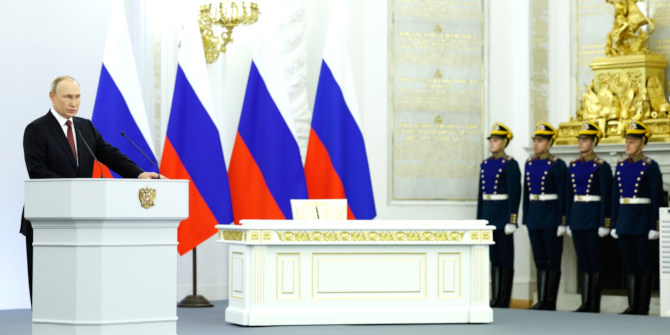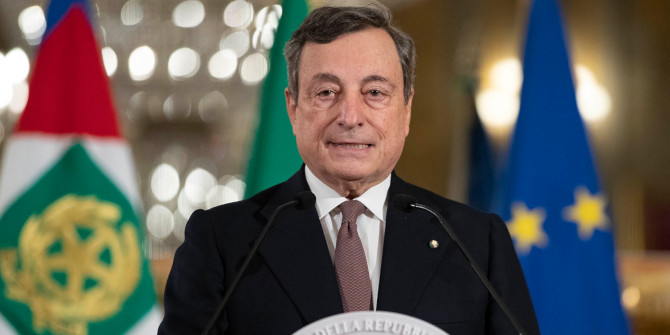
 The European Investment Bank (EIB) is intended to provide finance and expertise for investment projects that further EU policy objectives. But as Daniel Mertens and Matthias Thiemann explain, a steady expansion of the bank’s operations over the last two decades has prompted greater political debate over its governance and activities. They highlight three recent developments that underline this politicisation of the EIB.
The European Investment Bank (EIB) is intended to provide finance and expertise for investment projects that further EU policy objectives. But as Daniel Mertens and Matthias Thiemann explain, a steady expansion of the bank’s operations over the last two decades has prompted greater political debate over its governance and activities. They highlight three recent developments that underline this politicisation of the EIB.
Over the past two decades, the European Investment Bank (EIB) has become the world’s largest multilateral financial institution. In 1999, the EU member states’ ‘policy-driven’ bank counted around 1,000 staff members. This number is now close to 3,000. In 1999, the EIB’s balance sheet stood at 200 billion euros. It now stands at 550 billion euros.
While this has given the bank an enormous push in its organisational capabilities, it has also come with higher visibility, calls for transparency and accountability, and mounting political tensions. This process of politicisation is characteristic for the post-crisis evolution of the European Union, and apparently does not stop at the European Commission’s door or the European Central Bank (ECB). Three recent episodes in particular highlight why more attention should be focused on the EIB.
The EIB and investment policy under austerity
The proximate cause for the EIB’s increasing politicisation lies in the financial and economic crisis that started ten years ago. Faced with an outsized aggregate demand shock, the EIB took up the role of a counter-cyclical investment vehicle, increasing lending from 2008 onwards (in the years 2008-2011, balance sheet growth was 50 per cent, from 310 to 471 billion euros). While it first followed up on requests by member states and the Commission to ‘contribute to the recovery of the real economy’, and then, in the wake of the Eurozone sovereign debt crisis, provided support to the Europe 2020 Project Bond Initiative, the EIB quickly moved into debates over the stronghold of austerity policies.

European Investment Bank, Credit: Forgemind ArchiMedia (CC BY 2.0)
Former staff began promoting the bank as a powerful tool to address deficient growth in the EU. With structural funds as buffers, the EIB was to facilitate riskier projects to close the investment gap and offer an alternative draft to fiscal orthodoxy. This idea, mirroring a similar proposal by progressive economists Varoufakis, Galbraith and Holland, was taken up by the incoming Commission in 2014, where a compromise between the S&D and EPP before Jean-Claude Juncker’s election led to the establishment of the Investment Plan for Europe.
At this point, the bank gained political attention as a tool for some sort of consolidation-friendly investment policy – or in the words of the bank: ‘doing more with less’. But it also drew attention to how this investment policy would actually be conducted: civil society actors such as the NGO Counterbalance increasingly criticised the bank’s policy on a range of issues from environmental impact to tax avoidance and the widespread use of PPPs. This undesired political spotlight on the part of the EIB was only to intensify in the coming years. And currently, the EIB faces pressures from the Commission’s proposal for a reformed investment policy, investEU, that could break its privileged access to the EU budget.
The EIB and Brexit
The EIB’s expanded role in the crisis could not be realised, however, without an increase of the paid-in and callable capital provided by its shareholding member states. Currently, Germany, France, Italy and the UK are the four largest shareholders accounting each for more than 39 billion euros or 16 per cent of total capital. Unsurprisingly, the outlook of Brexit has led to several sites of political tensions around this fact and the future of the EIB. In Britain, it has stirred a discussion and parliamentary inquiry over how to compensate for the withdrawal of EIB funding that in 2015 still was at 5.6 billion euros, but fell to 2.1 billion euros in 2017.
While close observers of the EIB such as Stephany Griffith-Jones have suggested the UK could stay in the EIB, the bank has conversely asked its remaining shareholders to prepare for filling the capital gaps Britain bequests. This has opened up two debates: first, a group of seven countries, as the Financial Times reported, demanded extensive reforms before they would agree on contributing more capital, leading the EIB to negotiate over supervision by the ECB. Second, Poland has argued that post-Brexit contributions should include an adjustment of the relative shares in the bank, more adequately reflecting the changing economic weight of member states – a demand which, expectedly, has met with resistance from the larger countries. What this tells us is that recent politico-economic developments have produced a rift through member states prompting questions of principle about the governance of the bank and its future activities.
The EIB and diplomatic conflict
The third episode of ongoing politicisation grows out of the unilateral withdrawal of the U.S. from the agreement on Iran’s nuclear programme. Subsequently, the EU has tried to save the deal and safeguard European companies and financial institutions doing business in Iran from associated U.S. sanctions through several measures, one of which is the expansion of EU guarantees for EIB lending in Iran within the so-called External Lending Mandate.
As the European Parliament’s Research Service explains, adding Iran to the list of ‘potentially eligible regions and countries’ for EIB lending does not oblige it to do any business. EIB president Werner Hoyer has indeed made clear that extending the mandate for the EIB does not lead to any actual EIB activity in Iran. Quite to the contrary, he asserted that Iran is a place “where we cannot play an active role… [and] have to take note of the fact that we would risk the business model of the bank if we were active in Iran.” In turn, the bank is facing headwinds from politicians claiming a stronger role for the EU as a global actor, such as Carl Bildt.
Although global diplomacy is a peculiar playing field, the processes at play are instructive for the political tensions around the EIB at large. First, the EIB faces a similar problem in all three cases: how does it shield itself from a pool of political demands that has grown as much as its own capacities? Second, it commonly responds to those by referring to its dependence on (U.S.) capital markets for raising funds and emphasises its conservative risk management for maintaining a high investment grade (AAA). Any significant move into riskier waters, as policy makers have called for, would also risk its rating, the bank states. This is also the reason why EIB lending within the Investment Plan for Europe or the External Lending Mandate entails guarantees from the EU budget.
However, this will not reduce the political contention about the tasks of and control over the bank. Rather, the EIB has now repeatedly positioned itself as an institution able to tackle global challenges from climate change to migration; and in this sense, it is likely that the bank has fuelled its own politicisation.
Please read our comments policy before commenting.
Note: This article gives the views of the authors, not the position of EUROPP – European Politics and Policy or the London School of Economics.
_________________________________
 Daniel Mertens – Goethe University Frankfurt
Daniel Mertens – Goethe University Frankfurt
Daniel Mertens is a Researcher and Lecturer at the Institute for Political Science at Goethe University Frankfurt and currently Acting Professor in Internationally Comparative Political Economy at the University of Osnabrück.
–
 Matthias Thiemann – Sciences Po CEE
Matthias Thiemann – Sciences Po CEE
Matthias Thiemann is Assistant Professor at Sciences Po CEE. He is also an external fellow at the Research Center SAFE (Sustainable Architecture for Finance in Europe), Goethe University Frankfurt.





